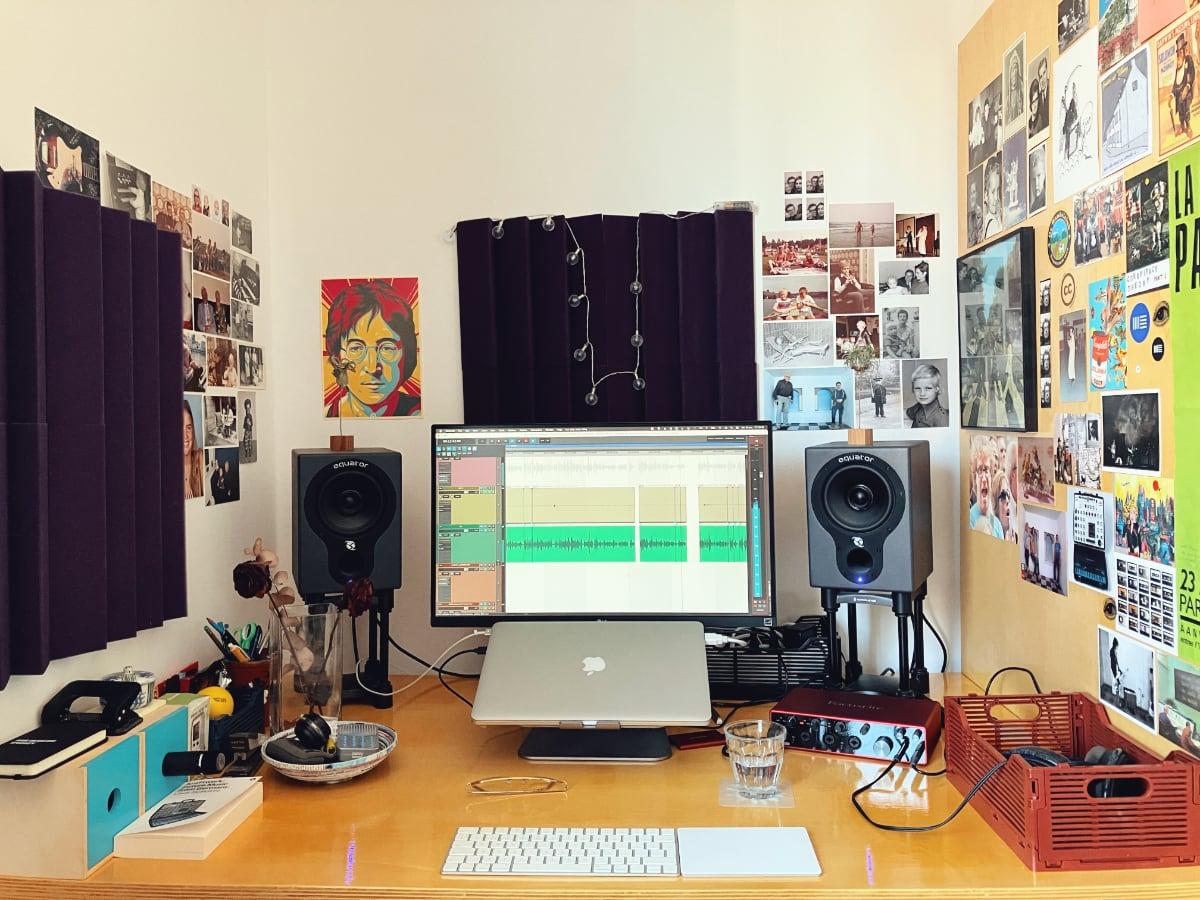These monitors may look good, but they’re actually meant to sound bad!
Sound On Sound
For many years I used these “bad sounding speakers”, Triple P Pyramids.
Speakers like the Auratone and the NS10 are particularly good at exposing mid-range balance errors because of frequency responses which rise smoothly to a peak around 1.5kHz and then fall smoothly away again. This means that the middle of the audio spectrum is emphasised in such a way that small changes of balance become very obvious. Hence, if the mix sounds right, it is right and will translate far more consistently to other systems, whether quality hi-fi, in-car, or ‘cheap and cheerful’ portable radio.
Sound On Sound
I’ve also worked with Auratones in the past. But what’s the deal with these kind of speakers?
As the Sound On Sound quote above says: ‘These speakers are very revealing in the mid-range because they are lacking in the bass and treble. But how does this work?
In perfect frequency response
A loudspeaker can only move back and forth at a certain speed (frequency) and with a certain force (loudness). The speaker driver may overload, causing the speaker to distort (resulting in compression and the generation of additional odd and even high frequencies). The cabinet in which the speaker is placed can cause certain frequencies to resonate. In short, a loudspeaker can never produce a perfectly flat frequency response.
Some speakers sound flatter than others, but is flatness what we want?
To make matters worse, our ears are super flawed, with a Fletcher curve that is anything but flat. Our ears are very easily tricked, depending on the volume of what we are listening to. And the room in which our speakers are placed is far from perfect, so some frequencies disappear and others build up like crazy.
Headphones? No, they are not perfect either.
A polite sound is a problem
I have used Sennheiser HD600 headphones a lot for audio projects over the last few years. But recently I started having problems with them. I became aware of them because I was also using two other sets of headphones: the Rode NTH-100 (closed headphones for studio use) and the Sennheiser CX 300s (for mobile use with my iPhone). But the NTH-100 and CX 300 have more top end and are more revealing when it comes to irritating sibilants. On the HD600, I didn’t notice it so much because it just sounded nice and transparent. On the NTH-100 and CX 300, however, things started to sound problematic.

How to reveal problems?
Let’s go back to how I started this blog post, with these small, mid-range focused speakers. Because they lack low and high frequencies, your ears will only be able to focus on the midrange. This makes it easier to detect problems in the mid-range.
But even without Auratones, using full-range speakers, you should be able to apply the right EQ settings.
The key, in my opinion, is to use good speakers to focus on problem areas. I’m mainly doing podcasts these days, so I’m super focused on natural sounding voices. The main problem areas are:
- sibilants
- too much or too little bass
- nasality and frequency stacking
In summary, the loudspeakers/headphones should reveal any problems. In general, I find it better to work with slightly exaggerated lows and exaggerated highs, as this will result in an irritating sound more quickly. That’s the whole point of the Auratones: some things sound super irritatingly lame through them. And then you know it’s not good and you have to fix it.
That’s why I love my Sennheiser CX 300s so much, because a lot of the audio I play through them sounds irritatingly bad. A lot of these productions use too much high end and with an de-esser voices sound too shrill. With the CX 300s, it just hurts and I know what the solution should be.
Using EQ on monitoring
You can use an EQ in your DAW during monitoring so that it is only used during playback. I’m experimenting with this so I don’t have to switch between different speakers and headphones. But I am still not very happy with my EQ curves. So most of the time I use my cheap Sennheiser CS300s and they tell me exactly what to do. They are my go-to grot box. Why bother using something else?
